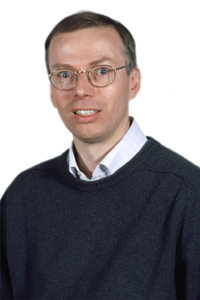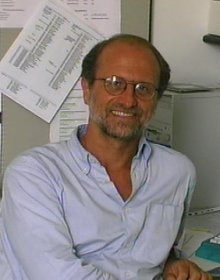
International Plenary Lecture I
International Plenary Lecture II
TITLE: The Inerter Concept and Its Application
PRESENTER: Prof. Malcolm C. Smith
AFFILIATION: Department of Engineering, University of Cambridge, Cambridge, U.K.

BIOGRAPHY: Malcolm Smith was educated at the University of Cambridge, England where he received the B.A. degree in mathematics in 1978, the M.Phil degree in control engineering and operational research in 1979, and the Ph.D. degree in control engineering in 1982.
He was subsequently a Research Fellow at the German Aerospace Center, DLR, Oberpfaffenhofen, Germany, a Visiting Assistant Professor and Research Fellow with the Department of Electrical Engineering at McGill University, Montreal, Canada, and an Assistant Professor with the Department of Electrical Engineering at the Ohio State University, Columbus, USA. In 1990 he returned to Cambridge as a Lecturer in the Department of Engineering and became a Reader in 1997 and Professor in 2002. He is a Fellow of Gonville and Caius College.
Dr Smith's research interests include Control System Design, Frequency Response Methods, H-infinity Optimization, Nonlinear Systems, Active Suspension and Mechanical Systems. He was a co-recipient of the George Axelby Outstanding Paper Award in the IEEE Automatic Control Transactions for the years 1992 and 1999, both times for joint work with Dr Tryphon T. Georgiou.
ABSTRACT: The force-current and force-voltage analogies between mechanical and electrical networks are basic and very well-known. What is also well-known, but not always emphasised, is that the mass element fails to be a true network dual of the spring. This is due simply to the fact that Newton's Second Law relates the acceleration of the mass to a fixed point in an inertial frame, which in network terms means that one "terminal" of the mass is grounded. Such a restriction does not apply to the spring or damper, or to any of the three basic electrical elements.
This fact has important consequences for network synthesis. Standard realisation procedures of passive electrical circuit theory show that any passive electrical impedance is positive real, and that any positive real rational function may be realised as the driving-point impedance of a network comprising resistors, capacitors and inductors only. There is a clear problem in translating this result over to mechanical networks if a given realisation contains a capacitor which has neither terminal connected to ground. A further drawback arises with the use of the mass element as the dual of the spring for the purpose of synthesis. Namely, it may be important to assume that the mechanical device associated with the "black-box impedance" to be designed has negligible mass compared to other masses in the system. Clearly this is unreasonable if (possibly) large masses may be required for its realisation.
The purpose of this talk is to describe a new mechanical circuit element called the "inerter", which is capable of simple physical realisation, to overcome these difficulties. Possible applications of the inerter in linear vibrations and vehicle suspensions will be discussed.
TITLE: Biomedical Robotics
PRESENTER: Prof. Paolo Dario
AFFILIATION: Scuola Superiore Sant'Anna, Pisa, Italy

BIOGRAPHY: Paolo Dario received his Dr. Eng. Degree in mechanical engineering from the University of Pisa, Italy, in 1977. He is currently a Professor of Biomedical Robotics at the Scuola Superiore Sant'Anna in Pisa. He also established and teaches the course on Mechatronics at the School of Engineering of the University of Pisa. He has been Visiting Professor at the Ecole Polytechnique Federale de Lausanne (EPFL), Lausanne, Switzerland, and at Waseda University, Tokyo, Japan. He was the founder of the ARTS (Advanced Robotics Technologies and Systems) Laboratory and is currently the Co-ordinator of the CRIM (Center for the Research in Microengineering) Laboratory of the Scuola Superiore Sant'Anna, where he supervises a team of about 70 researchers and Ph.D. students. He is also the Director of the Polo Sant'Anna Valdera and a Vice-Director of the Scuola Superiore Sant'Anna.
His main research interests are in the fields of medical robotics, mechatronics and microengineering, and specifically in sensors and actuators for the above applications. He is the coordinator of many national and European projects, the editor of two books on the subject of robotics, and the author of more than 200 scientific papers. He is the editor of many international journals.
Prof. Dario serves as President of the IEEE Robotics and Automation Society, as Co-Chairman of the Technical Committee on Medical Robotics of the same Society, is an IEEE Fellow and a recipient of the Joseph Engelberger Award. He is also a member of the Board of the International Foundation of Robotics Research (IFRR).
ABSTRACT: Biomedical Robotics poses new and exciting problems for theory and technology to Robotics and to many other disciplines. Biomedical Robots are expected to be very important for better quality of health care and life for citizens, and they have strong potential for the development of a new and solid industry.
Biomedical Robotics includes the "medical" applications of robotics and mechatronics, such as in surgery, endoscopy, rehabilitation, assistance to the disabled and the elderly, and prosthetics, as well as research and application in more speculative areas, such as the modelling and replication of biological systems.
In this talk, an overview of the field is presented, comprising definitions of Biomedical Robotics and examples of applications to surgery, endoscopy, rehabilitation and bionics. State of the art, scientific and technical problems and perspectives in these areas are discussed.
Back to SICE 2003 Homepage.